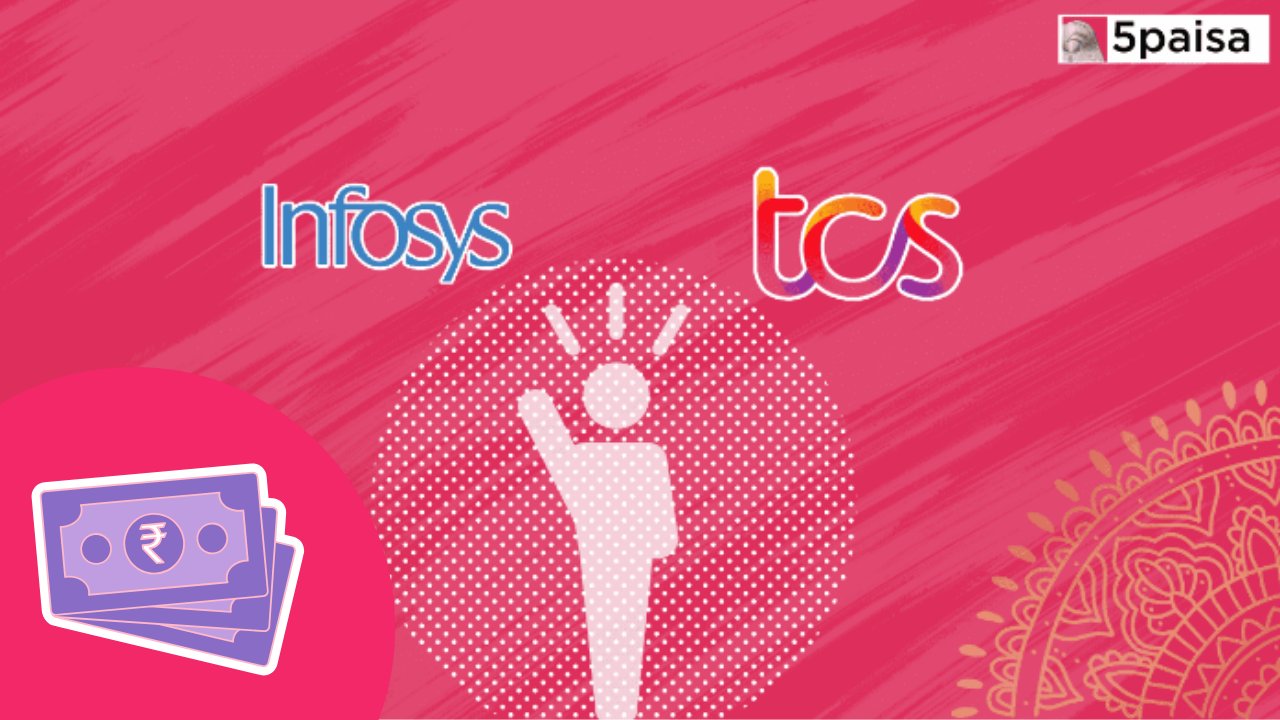Have you come across individuals expressing dissatisfaction over possessing excessive cash? The response is evident. Nearly everyone appreciates having surplus cash. Similarly, from a corporate standpoint, an excessive accumulation of unused cash can raise concerns.
Consequently, businesses opt to invest such funds to generate additional returns. Nevertheless, there exist companies in India that are notably affluent in terms of cash reserves
What Constitutes the Cash and Bank Balance of a Company?
The initial entry within the Current Assets section of the balance sheet comprises cash and cash equivalents. As the term implies, cash pertains to the company's physical currency holdings.
Cash equivalents encompass exceptionally liquid investments readily convertible to cash within a brief span, including Treasury Bills, Commercial Papers, or any Marketable Security
The company employs these fluid assets to fulfil its obligations and cover its expenditures.
In order to address its routine operational outlays, a portion is allocated to a designated account termed as petty cash, which is also encompassed within the Cash and cash equivalents category.
How Do Companies Arrive at The Total Cash Balance for A Year?
If you're in it for the long haul, you've likely encountered discussions about the three pivotal financial statements to scrutinize before investing in a company. Among them, the cash flow statement takes a prominent place. This statement encapsulates the inflow and outflow of cash and cash equivalents within a company over a given year.
When examining a roster of cash-rich companies, comprehending the fundamentals of the cash flow statement becomes crucial. Put simply, cash flows are segmented into three categories of activities:
Cash from Operating Activities: This encompasses all cash sources and uses stemming from a company's core business operations. In essence, it portrays the amount of cash generated by a company's products or services.
Cash from Investing Activities: This pertains to cash sources and uses arising from a company's investments, including transactions like asset purchases or sales, loans extended to or received from associates, and payments linked to mergers or acquisitions.
Cash from Financing Activities: This covers cash sourced from investors or financial institutions, as well as cash employed to compensate shareholders through dividends, stock buybacks, and the repayment of principal debt (loans).
Is It Possible for Companies to Possess Excessive Cash?
Would you believe that the concept of having an excess of cash exists? As surprising as it may appear, this holds true for numerous companies, given the multifaceted factors influencing a company's cash position.
An abundance of cash on the balance sheet can prompt investors to question why the company isn't deploying it for various purposes. Conversely, an upward trajectory in cash holdings might suggest that the company is experiencing heightened revenue generation.
Furthermore, it's essential to scrutinize the sectors or industries in which the company operates. For instance, industries with capital-intensive manufacturing processes might encounter greater challenges in amassing cash due to the continual need for equipment replenishment. Conversely, software companies tend to incur lesser cash outflows.
A consistent and expanding cash reserve typically indicates robust company performance. In fact, it underscores the swiftness at which cash is accumulating, sometimes even surpassing management's ability to strategize its effective utilization
Overview of the best Cash Rich Stocks in India
Methodology:
1. Companies have more than 25000 Crores in Reserves as of FY’23
2. Companies with cash Equivalent more than 11,000 Crores FY’23
A. Life Insurance Corporation (LIC)
The largest insurance provider in India is Life Insurance Corporation (LIC). Its market share for new business premium is greater than 66.2%. The firm provides both participating and non-participating insurance products, including annuity and pension products, unit-linked insurance products, saving insurance products, term insurance products, and insurance products with health benefits.
Operation Highlights
1. Dominant Market Presence: LIC, owned by the Government of India, holds a commanding position in the Indian insurance landscape, boasting a 61.6% market share in terms of premiums and a rich history spanning over 65 years.
2. Global Recognition: Globally ranked fifth by life insurance GWP and 10th in total assets, LIC stands as a substantial player on the international stage.
3. Robust Asset Management: With an AUM of Rs 40.1 lakh crore (17.0% of India's GDP), LIC stands as India's largest asset manager, significantly impacting the economy.
4. Strategic Investments: LIC's investments hold substantial weight in India's financial markets, encompassing around 4% of NSE's market capitalization and a significant holding of government bonds.
Financial Performance:
1. Historic Formation: Formed by merging and nationalizing 245 private life insurance companies in 1956, LIC has since established itself as a Domestic Systemically Important Insurer (D-SII).
2. Strong Brand Identity: Recognized as the third strongest and 10th most valuable global insurance brand, LIC's legacy brand has become synonymous with insurance in India.
3. Global Reach: Operating through a vast network of branches and offices across various countries, LIC collects a notable portion of its premium from overseas.
4. Diverse Product Portfolio: Offering a diverse range of individual and group products, LIC's product portfolio caters to different market segments and customer needs.
Key Concern:
1. Competition Challenges: LIC faces fierce competition from private insurers, resulting in diminishing market share and slower new policy growth.
2. Market Share Erosion: Private sector insurers have exhibited higher growth rates in terms of premium collection compared to LIC, reflecting increased market competition.
3. Stagnant Growth: LIC's premium collection increased at a CAGR of 9% from FY2016 to FY2021, lagging behind the 18% CAGR of private sector insurers during the same period.
4. Market Share Erosion: LIC's premium collection increased at a CAGR of 9% from FY2016 to FY2021, lagging behind the 18% CAGR of private sector insurers during the same period.
Pros:
1. The company maintains a virtually debt-free status.
2. It has achieved impressive profit growth with a CAGR of 71.6% over the past 5 years.
3. The company boasts a commendable track record of return on equity (ROE), with a 108% ROE over the past 3 years.
Cons:
1. The stock is currently valued at 8.99 times its book value.
2. Over the last five years, the company has shown a modest sales growth of 8.37%.
3. The tax rate appears to be on the lower side.
4. Earnings comprise an additional income of Rs. 91,003 Crores.
Outlook:
1. IPO Momentum: LIC is set to launch India's largest IPO, aiming to raise Rs 21,008 crore through an Offer for Sale by the Government of India, indicating a significant step towards capital infusion.
2. Adaptation Strategies: To combat increasing competition, LIC might implement strategies to enhance new policy growth and expand its market presence.
3. Global Expansion: With a strong global presence, LIC could continue exploring opportunities in untapped markets to diversify its revenue streams.
4. Digital Transformation: Incorporating digital sales channels and leveraging technology could help LIC improve customer engagement and convenience.
|
Key Financial Metrics |
FY'23 |
|
Face Value (₹) |
10 |
|
Market Cap (Cr) |
4,14,920 |
|
EPS (₹) |
57.55 |
|
Stock P/E (TTM) |
9.14 |
|
Dividend Yield (%) |
0.46 |
|
ROE (%) |
130 |
|
Net Profit Margin(%) |
4 |
|
Debt to Equity |
0 |
|
Cash conversion cycle |
0 |
|
Promoter’s Holdings (%) |
96.5 |
|
ROCE % |
149 |
Life Insurance Corporation (LIC) Share Price
B. Infosys
Infosys Ltd offers a range of consulting, technology, outsourcing, and forward-looking digital solutions to empower clients in realizing their digital transformation strategies. It stands as the second-largest Information Technology company in India, trailing only behind TCS.
Operation Highlights:
1. Diverse Service Portfolio: Infosys provides a wide range of services, from digital transformation solutions (~57% of revenues) enhancing customer experience to core services (~43% of revenues) covering traditional application management and infrastructure support.
2. Products and Platforms: The company offers services through key products and platforms, including Infosys Finacle, McCamish, Panaya, and Edgeverve, catering to various business needs.
3. Revenue Distribution: The revenue distribution across various verticals showcases a strong presence in financial services, retail, communication, telecom, energy, utility, manufacturing, and hi-tech industries.
4. Global Presence: Infosys operates extensively in North America, Europe, and other regions, contributing to its significant client base and revenue streams.
Financial Performance:
1. Clientele Diversity: Infosys serves a distinguished clientele, including Fortune 500 companies, with strong representation in various tiers of revenue contribution.
2. Employee Strength: As of FY22, Infosys boasts a substantial employee base, with an emphasis on college recruitment. However, the company witnessed elevated attrition rates in FY22.
3. Subsidiary Contributions: Key subsidiaries like Infosys BPM and Edge Verve play pivotal roles, contributing significant portions to the company's overall revenues.
4. Financial Performance: Infosys reported strong Q1 growth, particularly in manufacturing and life sciences, with an operating margin of 20.8%.
Key Concern:
1. Attrition Rate: A significant uptick in attrition rates in FY22 poses a concern and warrants close monitoring of employee retention strategies.
2. Discretionary Spending: Short-term challenges exist due to clients delaying discretionary projects, impacting segments like financial services, hi-tech, and retail.
3. Guidance Adjustment: The revised revenue growth guidance for the financial year, leaning toward the lower end, indicates potential for negative or flat growth in upcoming quarters.
4. Market Trends: Some clients are temporarily slowing down transformation programs, particularly in financial services, impacting demand for certain services.
Pros:
1. The company demonstrates a favourable return on equity (ROE) performance, with a consistent track record of 29.4% ROE over the past 3 years.
2. The company maintains a robust dividend pay-out ratio of 58.8%, reflecting its commitment to rewarding shareholders.
Cons:
1. The stock's valuation stands at 7.91 times its book value, which might raise concerns about its market price relative to its intrinsic value.
2. The promoter holding in the company is relatively low, at 14.9%, potentially impacting the extent of promoter involvement and influence.
Outlook:
1. Revenue Growth and Margin: Infosys remains optimistic about maintaining margins at 20% to 22% for the year, even amid uncertainties in the macro environment.
2. Long-Term Growth: Despite short-term challenges, Infosys is confident in its ability to regain competitiveness and sustain growth over the long term.
3. Discretionary Demand: The company anticipates the weakening phase of discretionary demand to eventually end, leading to realization of large and mega deals.
4. Cost Optimization: Infosys is actively implementing compensation hikes and cost optimization measures to ensure operational efficiency and sustained profitability.
|
Key Financial Metrics |
FY'23 |
|
Face Value (₹) |
5 |
|
Market Cap (Cr) |
5,87,128 |
|
EPS (₹) |
58.08 |
|
Stock P/E (TTM) |
23.8 |
|
Dividend Yield (%) |
2.4 |
|
ROE (%) |
31.8 |
|
Net Profit Margin(%) |
24 |
|
Debt to Equity |
0.11 |
|
Cash conversion cycle |
63 |
|
Promoter’s Holdings (%) |
14.94 |
|
ROCE % |
41 |
Infosys Share Price
C. TCS
Tata Consultancy Services, a cornerstone of the Tata group, stands as a prominent IT services, consulting, and business solutions entity. With a history spanning more than five decades, TCS has been a steadfast partner to numerous global enterprises, aiding them in their evolution. It offers an integrated suite of consulting-driven, technology-powered services and solutions, fostering business, technology, and engineering excellence.
Operation Highlights:
1. Diverse Revenue Mix: TCS operates across key verticals, with Banking, Finance Services & Insurance (BFSI) leading at 39%, followed by Retail & Consumer Business (17%), Communication, Media & Technology (16%), Manufacturing (11%), and other segments comprising 17%.
2. Innovative Platforms: TCS boasts an array of platforms like TCS BaNCS for BFSI, iON for virtual learning, Ignio for cognitive automation, and others, catering to diverse IT needs.
3. Strong Brand Identity: Recognized for its customer-centricity and execution excellence, TCS has reinforced its brand value across global markets, reaching an estimated worth of 13.5 Billion USD.
4. Global Presence: TCS earns around 52% of its revenue from the Americas, followed by Europe (31%), with India and the rest of the world contributing 6% and 11%, respectively.
Performance Highlights:
1. Financial Growth: TCS reported a robust Q1 2023, achieving 12.6% revenue growth, with operating and net margins standing at 23.2% and 18.6%, respectively.
2. Sectoral Expansion: TCS experienced growth in Life Sciences & Healthcare, Manufacturing, and Communications & Media sectors, while challenges were observed in the retail segment.
3. Generative AI Momentum: TCS's Generative AI offerings, including ignio and TCS BaNCS, marked a successful quarter with new wins and go-lives, reflecting increasing client interest.
4. Talent Development: The company's emphasis on talent development in AI and ML aims to train over 100,000 associates, ensuring a skilled workforce.
Key Concern:
1. Client Caution: Macro uncertainties have led to client caution, resulting in project reviews and pauses, potentially impacting short-term demand.
2. Market Uncertainty: TCS remains cautious about short-term market uncertainties, refraining from providing specific quarterly guidance.
3. Demand Variability: Some sectors faced softness in demand, while others showcased stability and growth, revealing challenges in maintaining a consistent demand outlook.
4. Margin Enhancement: Though striving for improved margins, TCS acknowledges the current macroeconomic situation's complexities in providing exact guidance.
Pros:
1. The company maintains an impressive debt-free status.
2. With a robust return on equity (ROE) performance, the company has achieved a remarkable 43.3% ROE over the past 3 years.
3. The company consistently offers a healthy dividend payout ratio of 61.4%.
4. Notably, the company has efficiently reduced its working capital requirements from 43.6 days to 32.8 days.
Cons:
The stock is currently valued at 14.0 times its book value.
Outlook:
1. Innovation Drive: TCS continues to nurture its research and innovation endeavours, maintaining focus on core computing areas while actively patenting its developments.
2. Global Brand Expansion: The company's strong global brand recognition and strategic presence in major markets position it well for further growth and transformational partnerships.
3. M&A Opportunities: TCS remains open to strategic mergers and acquisitions that align with its mission, enhancing capabilities and market position.
4. Long-Term Vision: TCS is committed to its long-term growth trajectory, focusing on talent development, margin improvement, and sustained client partnerships.
|
Key Financial Metrics |
FY'23 |
|
Face Value (₹) |
1 |
|
Market Cap (Cr) |
12,59,208 |
|
EPS (₹) |
115.19 |
|
Stock P/E (TTM) |
28.8 |
|
Dividend Yield (%) |
1.38 |
|
ROE (%) |
46.9 |
|
Net Profit Margin(%) |
18.73 |
|
Debt to Equity |
0 |
|
Cash conversion cycle |
81 |
|
Promoter’s Holdings (%) |
72.3 |
|
ROCE % |
59 |
TCS Share Price






